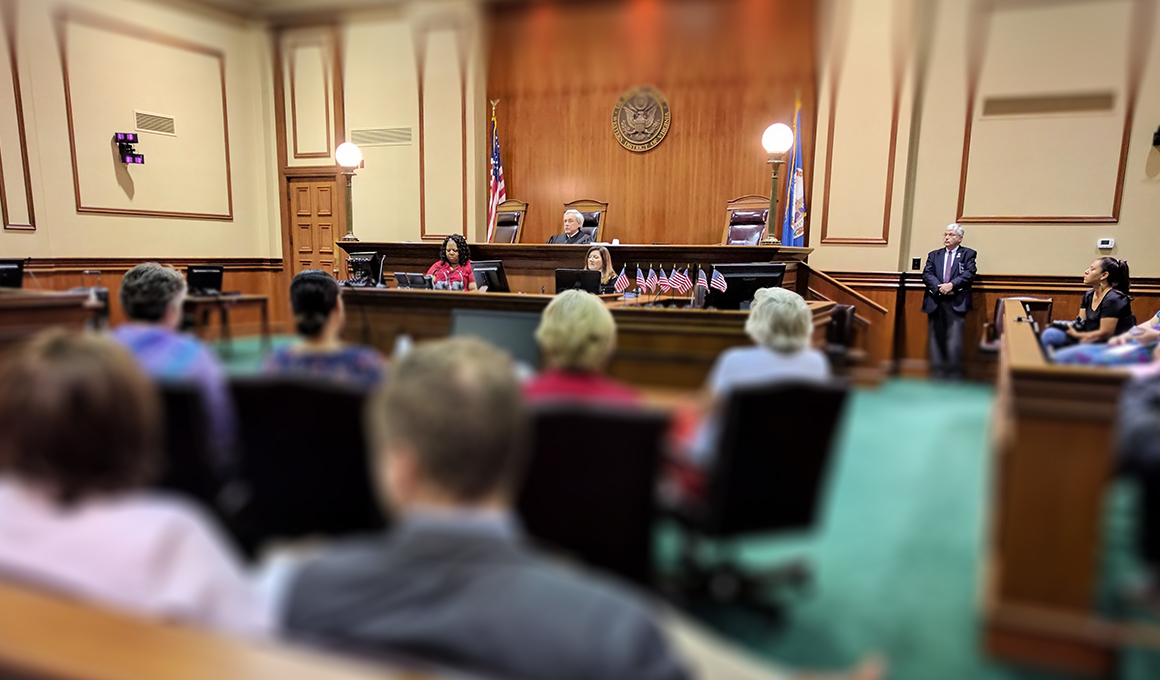Trial Presentation Specialized Assistance for Persuasive Legal Arguments
Astound the Court: Important Components of a Powerful Test Discussion
Important elements such as recognizing the target market, crafting a compelling narrative, and understanding spoken and non-verbal communication are vital components of an efficient presentation. As these elements intertwine, they develop a cohesive method that not just notifies yet additionally involves jurors on numerous degrees.

Comprehending Your Audience
Understanding your target market is a critical aspect of reliable test discussion. A successful discussion rests on the capability to grasp the demographics, worths, and predispositions of jurors. This understanding informs how arguments are mounted, evidence exists, and psychological appeals are crafted, making certain that the message reverberates with the jurors on a personal level.
Research indicates that jurors come from varied backgrounds and may have differing levels of comprehending concerning lawful proceedings. Furthermore, understanding the jurors' possible prejudices and life experiences permits the test speaker to expect objections and address worries proactively.
Reliable test discussion likewise includes observing jurors' responses throughout the procedures. Being in harmony with non-verbal hints can give insight into their involvement and receptivity, permitting for real-time changes in strategy. Inevitably, an extensive understanding of the target market not only improves communication however likewise constructs connection, boosting the likelihood of a favorable result. Involving with jurors as individuals instead of a collective system is vital in fostering a strong link in the courtroom.

Crafting a Compelling Story
Crafting a compelling story is important in leading jurors with the complexities of an instance. A well-structured story not just streamlines intricate legal principles yet additionally involves jurors on an emotional degree, making the information extra relatable and memorable.
This message ought to reverberate with the jurors' values and experiences, promoting a link that goes beyond plain truths. This chronological approach can assist jurors adhere to the progression of events, stressing cause and effect.
Including human aspects-- such as individual tales or narratives-- can better enhance the story's effect. These components evoke compassion, enabling jurors to envision the effects of the instance on the real worlds. In addition, employing a constant motif throughout the discussion enhances the main argument, making it easier for jurors to retain important points.
Eventually, a compelling story changes a trial discussion from a simple recounting of realities into an influential story that mesmerizes the court, encouraging them to ponder with both reason and feeling.
Making Use Of Aesthetic Help
Incorporating visual aids right into a trial presentation can dramatically improve jurors' understanding and retention of details. Visual products such as charts, diagrams, photos, and videos can transform complicated lawful concepts and evidence into easily absorbable formats. By engaging multiple senses, these aids permit jurors to envision the case's crucial elements, making it less complicated for them to comply with along and grasp detailed information.
Additionally, properly designed visual aids can stress crucial points and highlight relationships between various items of evidence. Timelines can properly highlight the sequence of occasions, while Resources annotated photos can clarify particular details pertinent to the situation. This not just help in understanding yet additionally strengthens the story provided by the lawyer.
It is crucial, however, to ensure that visual aids are appropriate, clear, and properly provided. Excessively complex or chaotic visuals may bewilder jurors and diminish the message. When used judiciously, aesthetic aids offer to match the oral arguments and improve the overall effect of the trial presentation. Ultimately, effective visual communication can be a powerful device in encouraging jurors and helping them reach informed final thoughts.
Grasping Verbal Communication
Efficient spoken interaction is crucial in a test presentation, as it functions as the primary means via which lawyers share their debates and get in that site touch with jurors. Mastering this skill includes clearness, persuasion, and involvement. Lawyers have to express their factors plainly and briefly, staying clear of legal lingo that might perplex jurors. Simpleness in language fosters understanding and aids jurors comprehend complex problems provided throughout the trial.
Furthermore, tone and pacing considerably effect how messages are gotten. A positive tone shares authority, while proper pacing permits jurors to take in information without feeling overwhelmed. Attorneys must also differ their vocal inflections to highlight crucial points and preserve jurors' interest throughout the discussion.
In addition, the company of verbal disagreements is important. Structuring the narrative logically and coherently aids jurors comply with the lawyer's line of reasoning, making it simpler for them to preserve essential info. Making use of persuasive strategies, such as storytelling, can also improve the emotional resonance of the arguments offered, thereby creating an extra profound connection with jurors.
Inevitably, grasping verbal interaction not only reinforces a lawyer's situation yet also fosters trust and connection with the court, dramatically enhancing the my response opportunities of a beneficial decision.

Involving With Body Language
Nonverbal communication plays an essential role in trial presentations, usually sharing messages that words alone can not share. Body language, incorporating gestures, posture, facial expressions, and eye call, considerably influences just how jurors perceive the trustworthiness and sincerity of the presenter. A certain position, with shoulders back and an open position, can infuse depend on, while closed-off body language may recommend defensiveness or uncertainty.

Facial expressions need to reflect the feelings linked with the case, reinforcing the story being presented. For circumstances, a genuine expression during a poignant moment can elicit compassion and strengthen the sob story. Eventually, mastering body language is vital for reliable test discussions, as it enhances verbal interaction and establishes an engaging presence that reverberates with the jury.
Conclusion
To conclude, astounding the jury requires a tactical approach that includes comprehending the audience, crafting a compelling narrative, using aesthetic help, grasping spoken interaction, and engaging through body language. Each aspect plays a critical duty in creating an effective trial discussion that reverberates with jurors on both psychological and intellectual levels (trial presentation). By integrating these parts properly, attorneys can dramatically improve their capability to convince and influence jury decision-making